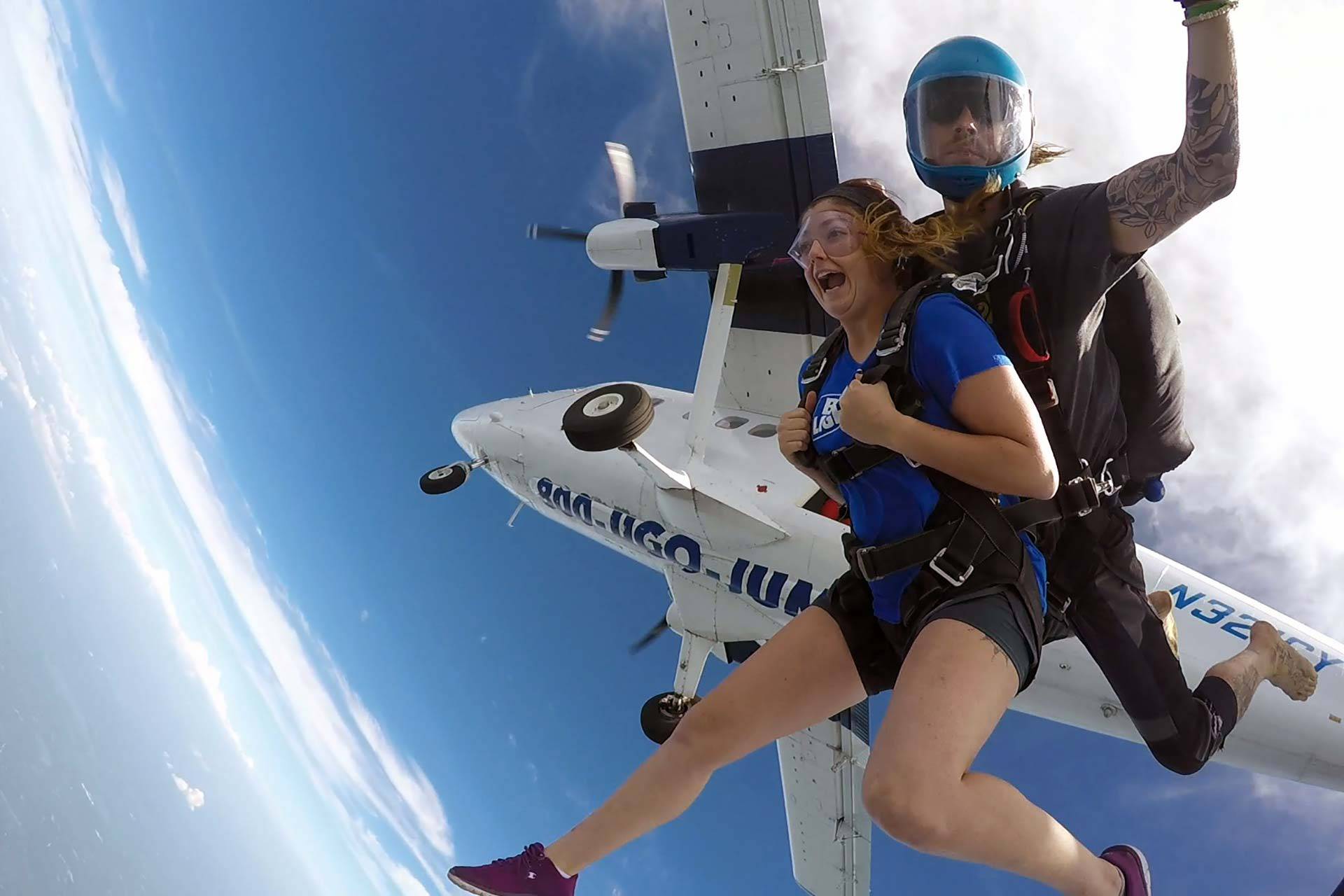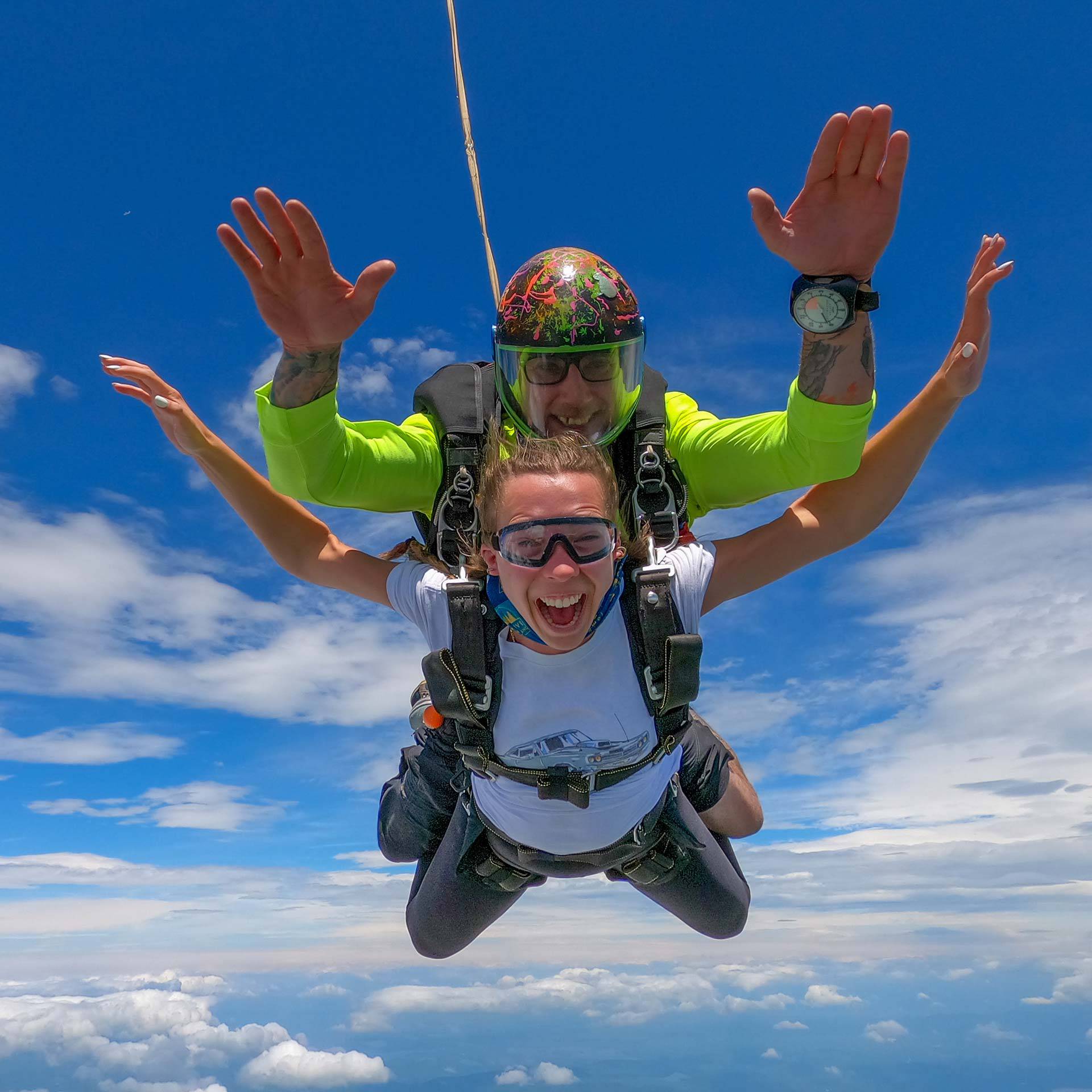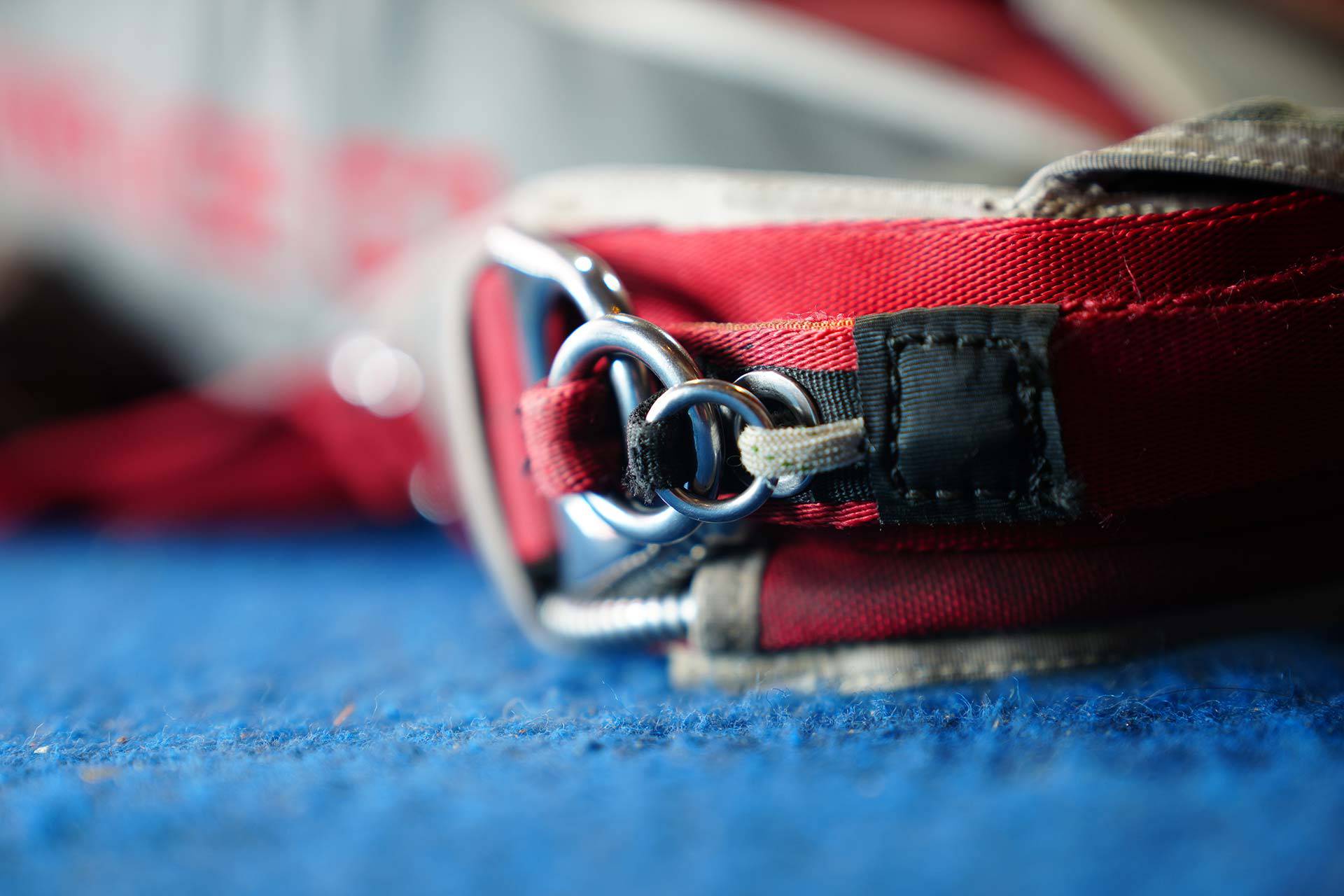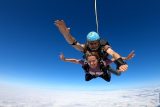Skydiving Weight Limits and Restrictions
Blog
Posted by: Laura Morris
4 years ago
Skydiving is an unparalleled adventure. One we hope to share with as many people as possible. Yet, despite our wish that everyone could have the chance to experience this incredible activity, there are still restrictions that must be kept in place to minimize the risks incurred by both instructors and students. One of these restrictions is the skydiving weight limit. At Skydive New England, the tandem skydiving weight limit is 240 pounds, and the AFF skydiving weight limit is 225 pounds.
Our skydiving weight limits are in place as no act of prejudice, but rather, maintained for several safety reasons. Let’s take a look.
Why is There a Weight Limit For Skydiving?
The Harness Needs To Fit Properly
In addition to a tandem skydiving weight limit, we may also need to restrict tandem students based on height and weight proportions. On a tandem skydive, individuals are outfitted with a harness that connects at four points (two lateral connection points at the hips and two at the shoulders). This harness has adjustable straps across each of the shoulders, the chest, the belly, and around each of the thighs.
Tandem harnesses can only adjust within a specific margin. Beyond that, the harnesses begin to stray into unsafe parameters. Overall, the harness needs to be securely fastened but not too tight. Having a harness that is too tight just isn’t uncomfortable, but it can also compromise safety. This is why we may have to employ additional restrictions based on proportion.
We understand that conversations around weight and body size can be triggering, and we want to be sensitive to that. If you have concerns about proper harness sizing, give us a call. We may be able to consult with you to determine if we will be able to achieve a proper harness fit.

Skydiving Equipment Has A Weight Limit
Skydiving equipment is designed, tested, and approved by the Federal Aviation Administration based on maximum operating weight. With tandem skydiving, this maximum operation weight includes the instructor, the student, and the weight of the equipment that they are using. For the majority of civilian parachute systems, this maximum operation weight is 500 pounds.
What Happens When You Increase Skydiving Weight?
Heavier weights will affect the speed which the tandem pair falls, the force with which the parachute opens, and the speed that occurs on landing. If the skydiving weight limit is exceeded, it can result in fast, forceful parachute deployments, snapped lines, and landings that are unsuitably swift.
Additionally, the heavier the pair suspended beneath the parachute equipment, the greater the wear and tear on both the gear and the instructor. To reduce the chance of complications and to create the best chance of success for a rewarding skydive, we have set our tandem skydiving weight limit at 240 pounds.
Can Overweight People Skydive?
Unfortunately, skydiving over the weight limit puts both you and your skydiving instructor at risk. For those who have a few pounds that they need to shed, the chance to skydive can be a powerful motivator. After all, what better way to celebrate achieving a weight loss goal than by making a tandem skydive?
We know it can be uncomfortable discussing body weight, and our intention is never to embarrass anyone, especially potential guests. We simply wish to be direct when it concerns the safety of our valued students and our instructors. If you have any further questions about our skydiving weight limit, please reach out. We will always treat your questions with the respect and discretion they deserve.
Categories:
You May Be Interested In:
Enter to Win a Free Skydive
Join our email list and enter to win a free tandem skydive. Drawings in April and December; winner announced on social media.
You’ll get a $10 coupon toward a tandem just for signing up! Must be 18 and under 240 lbs to jump.
*By submitting this form, you are consenting to receive marketing emails from Skydive New England, 40 Skydive Lane, Lebanon, Maine 04027. You can revoke your consent by using the SafeUnsubscribe link located at the bottom of every email. Emails are serviced by Constant Contact.


Even More Wicked-Fun Than It Looks!
Come see why the biggest DZ in New England is also the best.




